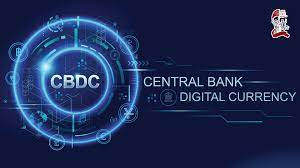BITCOIN DECIPHERED
- Leonard Tajeu

- May 26, 2021
- 7 min read

Most people struggle to answer the question, “What is Bitcoin?” because there are many different ways to respond.
Bitcoin is considered the first and the most widely used cryptocurrency. A cryptocurrency is a completely digital, decentralized currency that is built using principles of computer science, cryptography, and economics. The term “Bitcoin blockchain” refers to the protocol governing this currency. A bitcoin user will say that they have a certain amount of bitcoins, similar to how we say we have a certain amount of shillings/dollars when referring to the KES Shilling/US Dollar.
Blockchain is the technology that underpins the cryptocurrency bitcoin, but bitcoin is not the only version of a blockchain distributed ledger system in the market. There are several other cryptocurrencies with their own blockchain and distributed ledger architectures. The bitcoin blockchain, in particular, stores a permanent history of all transactions to ever occur in the history of bitcoin. It is an append-only ledger, meaning that any information added to the ledger cannot be deleted.
Origin of Bitcoin
In late 2008, around the time of the financial crisis, a ground-breaking post appeared on a little-known internet forum entitled Bitcoin: A peer-to-peer electronic cash system. It was written by a mysterious person called Satoshi Nakamoto; a pseudonym used to disguise the author’s true identity.
Satoshi thought that the banks and governments had too much power that they used in their own self-interests. Satoshi envisaged a new type of money called bitcoin that could change that: a cryptocurrency that wasn’t controlled or run by central banks or governments, that you could send anywhere around the world for free, with no person or institution in charge. At first, nobody paid attention to Satoshi’s wild ideas – but slowly, more and more people started buying and
using bitcoin. Many believed it was the future of money, and the worse the big banks behaved, the more popular it became.
Since it was formulated and launched in 2009, bitcoin has grown to a network of around 10,000 “nodes” or participants which use the Proof of Work system to validate transactions and mine bitcoin. In bitcoin, users do not need to use their real-world identities; instead, they are represented by addresses, strings of random letters, and numbers. Bitcoin takes control out of the hands of third parties and gives users the freedom to transact while protecting their privacy.
So how does Bitcoin do it? On a high level, the Bitcoin network validates transactions and stores the entire transaction history. The Bitcoin network is a group of users communicating with each other as part of the Bitcoin protocol. This network serves as the substitute for the central bank and must have certain properties to function correctly. Bitcoin is trying to create an open, accessible cryptocurrency not subject to censorship or centralization.
But what are the problems? Keep in mind the problems of trying to create an open, accessible cryptocurrency not subject to censorship or centralization. There are no central parties to ask for information about user accounts, and there are no central parties to kick out or censor malicious users. Decentralized networks generally suffer from these problems, leading to inconsistencies
between parties and malicious messages infecting the network. The most popular attack is known as the double-spending attack, an attack where some value is used for more than it's worth. In real life, it’s easy to prevent double-spending: since currency notes can’t be legally copied and pasted.
However, in digital currencies, there needs to be an assurance that the virtual tokens have not been promised to more than one person. Bitcoin as a technology is trying to solve a particular problem in the realm of distributed systems: when any “node,” or computer within the network, can come and leave as it pleases and behave however it likes. There are enormous possibilities for failures given the complete removal of centralization, which is why there were so many bitcoin’s predecessors to bitcoin, which failed.
So how does Bitcoin solve these problems? Bitcoin solves these problems in two ways. First, the blockchain, and second, the proof-of-work consensus protocol, both of which are Satoshi Nakamoto’s most popular and influential innovations. Because of these two things, anyone with access to the internet and a computer can join the Bitcoin Network. There are no banks or any equivalent of a central bank on the Bitcoin Network.
Instead, everyone can verify and audit the transaction history on their own. Even the creation of money is decided not by a central authority, but through the process of mining, in proof-of-work. Bitcoin aims to get rid of the central entity, the bank. To understand how it does that, we first need to understand what purpose a bank serves and what features it provides to users, then understand the parallels in bitcoin. The first thing that banks do for us is to manage accounts for us.
Banks verify that we are the legitimate owner of the bank account and only we can spend the money or the funds. How does a bank do that? Banks will ask us to provide identification before any activity can take place. Every transaction we conduct can be traced back to our identity.
On top of that, banks transfer and redeem money on your behalf. We send money to each other through banks. We rely on banks to honestly record our account balances. This way, we don’t need to send money through envelopes to relatives -- we let these central institutions move money in safe and established ways on our behalf. To keep track of all this information, we rely on banks to keep track of our account balances. Banks update our account balances whenever we make a new transaction. They also let us see statements so that you’re aware of your history of activity. But most importantly, banks provide trust: banks are run by educated professionals from top-tier universities and under the constant regulation of the government. If you trust the government's quality of education and standards, you can trust the bank. If you don’t, then you start looking for alternatives, and this is where bitcoin comes in.
So, let's take a look at how bitcoin can fulfill a bank's functions. In bitcoin, identity and account management are completely autonomous. Each user of bitcoin creates their own identity instead of asking a bank to create one. Anyone can generate a bitcoin identity on their own. This identity is disconnected from their real-world identity, providing a high degree of privacy. On top of that, transactions are also peer-to-peer. Instead of talking to a bank that will talk to another bank that will eventually talk to the recipient of some money, we can make transactions directly with our peers and be confident that the rest of the network confirms them. Therefore, in bitcoin, users can send funds to each other directly, knowing that the entire network will validate their transactions without the presence of a third party.
To store all this information, each bitcoin user gets to possess their individual copy of the ledger. This decentralized approach of record-keeping ensures data integrity despite the presence of faulty nodes that might record the information dishonestly. The decentralized nature of bitcoin also prevents the risk of a single point of failure. If a particular node is hacked in bitcoin because everyone is a record keeper, the rest of the network can still ensure the integrity of the transaction record and keep running. Finally, there is still a need for trust in bitcoin: instead of trusting people in suits, we trust math and logic.
We trust that the Bitcoin protocol is correct, allowing us not to trust the users and still have certainty that transactions are being validated correctly. We trust in the incentive alignment and publicly verifiable, tamper-evident ledger instead of our fellow users. All of these pieces together make bitcoin the technological revolution that kicked off the cryptocurrency movement.
How do Bitcoin Transactions Work?
Each bitcoin is basically a computer file that is stored in a 'digital wallet' app on a smartphone or computer. People can send bitcoins (or part of one) to your digital wallet, and you can send bitcoins to other people. Every single transaction is recorded in a public list called the blockchain. This makes it possible to trace the history of bitcoins to stop people from spending coins they do not own, making copies, or undoing transactions.
The bitcoins that you send to someone were sent to you from someone else. When they sent them to you, the address they sent them from was registered on the Bitcoin blockchain as the transaction input. Your address—the address they sent it to—was registered on the Bitcoin network as the transaction output.
When you send that bitcoin to someone else, your wallet creates a transaction output, which is the address of the person you’re sending the coin to. That transaction will then be registered on the Bitcoin network with your bitcoin address as the transaction input. (More on this in the next post)
There are three main ways people get bitcoins.
You can buy bitcoins using fiat money.
You can sell things and let people pay you with bitcoins.
Or they can be created using a computer.
How Bitcoins Are Created Using a Computer
For the Bitcoin system to work, people can make their computers process transactions for everybody. The computers are made to work out incredibly difficult sums. Occasionally they are rewarded with a bitcoin for the owner to keep. People set up powerful computers to try and get bitcoins. This is called mining. But the sums are becoming more and more difficult to stop too many bitcoins from being generated. If you started mining now it could be years before you got a single bitcoin. You could end up spending more money on electricity for your computer than the bitcoin would be worth.
Bitcoin is not only a cryptocurrency but also, in many cases, a highly lucrative investment. As a tradable asset and a unique store of value, bitcoin price increases have led to unparalleled returns on investment in many cases. As a digital currency with a finite supply, many argue that bitcoin is inherently deflationary.
However, since bitcoin primarily exists outside government regulation, it poses more risk than dealing with government currency and other asset classes. However, it isn’t hard to sell or buy, and you can make a limited amount of purchases.
If you decide to dabble in bitcoin, classify it under your high-risk, high-reward portfolio. You can reap huge profits in the short term and lose heavily if the value drops. Understand that bitcoin is a relatively new technology, and even futurists aren’t sure about its fate. Use the philosophy “buyer beware” when investing in bitcoin.
“Blockchain is the tech. Bitcoin is merely the first mainstream manifestation of its potential.” – Marc Kenigsberg: Managing Director of BlockSmarter.



Comments